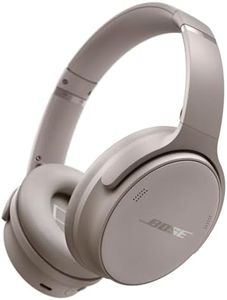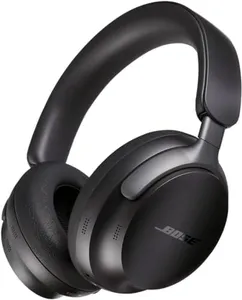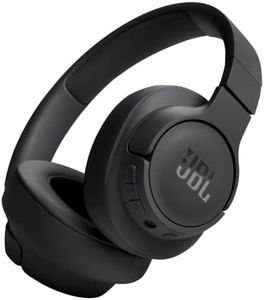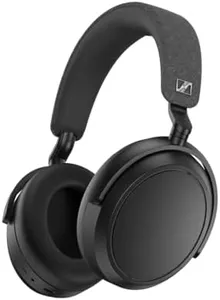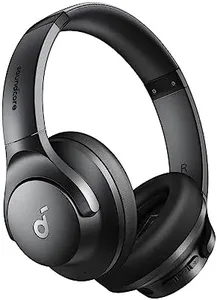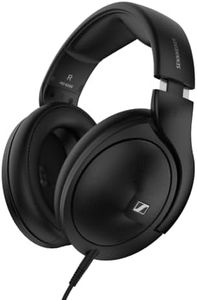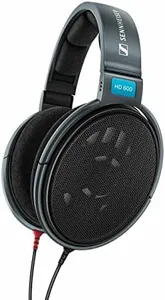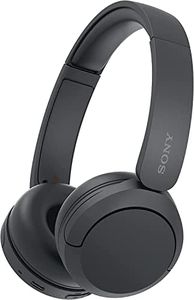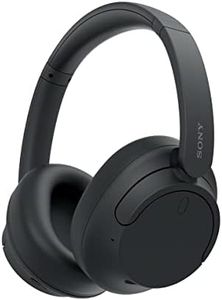We Use CookiesWe use cookies to enhance the security, performance,
functionality and for analytical and promotional activities. By continuing to browse this site you
are agreeing to our privacy policy
10 Best Loudest Headphones
From leading brands and best sellers available on the web.Buying Guide for the Best Loudest Headphones
When you're shopping for the loudest headphones, it's important to remember that volume and clarity go hand in hand. You might be tempted to focus only on how loud headphones can get, but comfort, audio quality, and hearing protection are all just as crucial. Think about how, where, and for how long you’ll be using them. High volume levels can damage hearing, so aim for a balance between loudness and safe listening. Reliable headphones should not only be capable of high volumes but also handle them without distorting the sound. Understanding the key specifications will help you make a smart choice tailored to your needs.Sensitivity (dB/mW)Sensitivity measures how loud headphones will get given a certain amount of power. It is usually expressed in decibels per milliwatt (dB/mW). Higher sensitivity means the headphones can achieve louder volumes with the same power input. Sensitivity values typically range from about 85 dB/mW (lower sensitivity, needs more power for high volume) to 120 dB/mW (very high sensitivity, gets loud easily). For most listeners, a value around 100-110 dB/mW is enough for noticeable loudness without straining the power source, like a phone or portable player. If you want a very loud experience but only have a basic audio source, look for higher sensitivity ratings, but always be mindful of your hearing health.
Impedance (Ohms)Impedance tells you how much resistance the headphones provide to the electric signal, measured in Ohms (Ω). Lower impedance (16-32Ω) headphones get louder with less power, making them a good fit for phones, laptops, and portable devices. Higher impedance (above 60Ω) headphones can usually handle more power and may sound better or even louder, but they require a dedicated amplifier to reach their full potential. If you plan on using your headphones with simple devices, stick to low impedance. If you have or plan to get an amplifier, higher impedance headphones become an option for powerful and distortion-free sound at higher volumes.
Driver Size & TypeThe driver is the part of the headphone that makes the sound. Generally, larger drivers (measured in millimeters) can move more air, creating higher volumes and deeper bass. Common driver sizes range from 20mm (small, on-ear headphones) to 50mm or more (large, over-ear headphones). Larger drivers don’t automatically guarantee loudness, but they often help deliver it more easily, especially at lower frequencies. If you’re after thumping, room-filling sound, look for bigger drivers, but also consider build quality, as design factors can also influence performance.
Maximum Input PowerMaximum input power is the highest amount of electrical power the headphones can handle without risk of damage, given in milliwatts (mW) or watts (W). Higher maximum input power means the headphones can be pushed to louder levels safely when paired with strong sources or amplifiers. You’ll find values from as low as 30mW (low power) to over 3,000mW (extremely high power, mainly on professional gear). Choose headphones with a higher maximum input power if you plan to use them with amplifiers or strong sources. For everyday listening devices, matching the device output to the headphones’ input rating is usually safe and loud enough.
Noise Isolation / Noise CancellationNoise isolation and noise cancellation both help block out outside sounds, letting you hear your audio better at lower volumes, which can make headphones sound effectively louder. Noise isolation uses physical design (like tight ear pads) to muffle external noise. Noise cancellation uses electronics to cancel out certain frequencies of outside sound. If you’re in noisy environments often, both features can make a big difference and allow you to listen at safer, lower volumes that still feel loud and clear. Think about your typical listening environment to decide if this is a must-have for you.
Distortion Levels (THD)Total Harmonic Distortion (THD) shows how much the headphones distort the original audio signal when played loud. Lower distortion (expressed as a percentage, like 0.1% or below) means the headphones can play louder without the sound getting fuzzy or harsh. If you enjoy high-volume listening, lower THD ensures that the sound remains clean and enjoyable, so check for this spec if available, especially if high-fidelity is important to you at louder settings.
